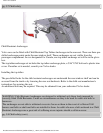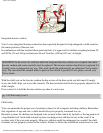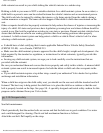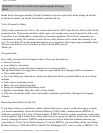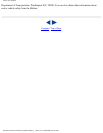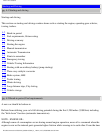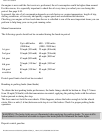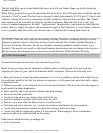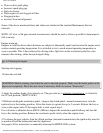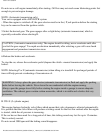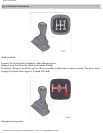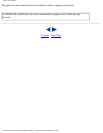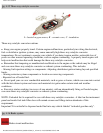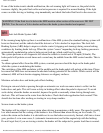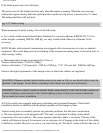
1993 Volvo 850 GLT
The fuel tank filler cap is located behind the door on the left rear fender. Open cap slowly during hot
weather conditions.
When filling, position the cap in the special bracket on the door. After filling the tank, install the cap and
turn until a "click" is heard. The fuel tank is designed to hold approximately 19.3 US gals (73 liters) with
sufficient volume left over to accommodate possible expansion of the fuel in hot weather. The "usable"
tank capacity will be somewhat less than the specified maximum. When the fuel level is low, such
factors as ambient temperature, the fuel's "vapor pressure" characteristics, and terrain can affect the fuel
pumps' ability to supply the engine with an adequate supply of fuel. Therefore, it is advisable to refuel as
soon as possible when the needle nears the red zone, or when the fuel warning light comes on.
CAUTION: Take care not to spill gasoline during refueling. Gasolines containing alcohol can cause
damage to painted surfaces, which may not be covered under the New Vehicle Limited Warranty or
Corrosion Protection Warranty. Do not use gasolines containing methanol (methyl alcohol, wood
alcohol). This practice can result in vehicle performance deterioration and can damage critical parts in
the fuel system. Such damage may not be covered under the New Vehicle Limited Warranty.
pg. 4:4 Driving economy
Economical driving does not necessarily mean driving slowly
Better driving economy may be obtained by thinking ahead, avoiding rapid starts and stops and
adjusting the speed of your vehicle to immediate traffic conditions. Observe the following rules:
● Bring the engine to normal operating temperature as soon as possible by driving with a light foot on
the accelerator pedal for the first few minutes of operation. A cold engine uses more fuel and is subject
to increased wear.
● Whenever possible, avoid using the car for driving short distances. This does not allow the engine to
reach normal operating temperature.
● Drive carefully and avoid rapid acceleration and hard braking.
● Do not exceed the speed limit.
● Avoid carrying unnecessary items (extra load) in the car.
● Check tire pressure regularly (check when tires are cold).
● Remove snow tires when the threat of snow or ice has ended.
● Note that roof racks, ski racks, etc., increase air resistance and thereby fuel consumption.
● Avoid using the automatic transmission kick-down feature unless necessary.
● Avoid using the air conditioning when it is not required. When engaged, the air conditioner's
compressor places an additional load on the engine.
Other factors which decrease gas mileage are:
● Low tire pressure
file:///K|/ownersdocs/1993/1993_850GLT/93850_4_1.html (4 of 8)12/30/2006 9:43:02 AM



